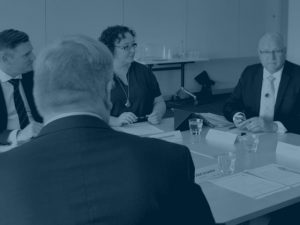Engaging clients and giving them an excellent experience is simply best practice. It allows you to remain relevant, competitive and sustainable. What is often second nature to an adviser may be very foreign to a client. In this article, Rachel Staggs from SRSCC, encourages advisers to take a step back and look at the experience a client goes through when they do business with you and to question each step.
As Rachel writes, mapping out your advice process may take a little time but finding ways to better serve clients is always a positive outcome
In a client-centric world we know it’s critical to make sure that we give every client an excellent experience. We’ve known that for years, and some advisers have been working on their client journeys for some time and many haven’t addressed it yet.
I would strongly recommend you do.
Why? Firstly, it is best practice to map out the experience you give a client but perhaps more importantly because of increased competition. While online solutions lack the personal touch and – yes, I know much more – what they do excel in is the smooth client experience. They have mastered the client journey, from the scripts that the sales consultants use through to delivering the paperwork and end solution. So, to remain relevant, competitive and ahead it’s important to review your client processes and experience continuously.
When you create the space and time in your business, you can start to map out the exact steps a client goes through when they engage with your business. This exercise enables you to improve your processes and systems, increase the chance of them spreading the good word about your business and also increase the opportunity for further revenue generation.
How and where do you start?
Client experience is one of the ways in which your business can differentiate itself from all the others, and while you may be looking for a cheat sheet or template to complete I’m going to suggest you start with some good old fashioned butchers paper! This isn’t a case of modelling another businesses experience rather about you and your business creating your own blueprint.
What do you believe the client wants to receive and experience? Have you asked them?
The idea around this practical exercise is to write down every single step, and interaction your potential and existing clients have with your business. It’ll take a bit of work but the best approach to this type of exercise is to be specific, very specific; down to how many times does the phone ring through to how many times will they receive communications from you, what is the communication and how do they respond to it.
Clients love it when you can save them time and save them money: I think we all like that! I know working with financial advisers that some bury clients in detail while others lack the detail! What do you believe the client wants to receive and experience? Have you asked them?
Once you have mapped out the exact steps a client goes through it’s important to make sure you re-visit each step on a regular basis – don’t set and forget – and ask yourselves, how can we improve that step by 5%? No need to re-invent the wheel all the time, that won’t help anyone, but constantly looking for improvements is good business.
Once you’ve created your client journey there are five things to consider:
1. Measurement of success
How will you know if each step is working? Has it reduced time? Has it improved client satisfaction? Has it increased word of mouth introductions?
2. Identify the weak spots
80% of the time you will identify steps that need improving. I acknowledge that a successful advice business is busy and doesn’t always have a bucket of spare time. However, once you have identified these weak points, create an action plan to improve them otherwise, your client experience won’t be able to stand up to the best.
3. Get in touch emotionally
Step back and consider how a client might be feeling at each of your steps. Are they feeling concerned, happy, nervous, unsure? How do you think they are feeling and what can you do to address that feeling?
4. Take the blinkers off
You know what it can be like when you work in an industry day in, day out, you become blind to other industries, to other experiences you may have. Keep track of all the great experiences you have and ask yourself, ‘how can we manifest that into our business?’
5. Review your technology
Assuming you use technology to assist you in your business, the question is, is that the right technology to give your clients the experience and engagement they want and need from you? Are you using a system that can evolve and adapt as your business does? One of the things that will help you remain competitive and seamless, will be the technology.
Improving the processes and systems in a business and linking that to the client journey is essentially one of the easiest ways to differentiate your business. It can be a daunting exercise and may require an external person to facilitate it for you, please let me know if you are interested, and I can explain how I can help you and your business.

In her regular Practice Marketing column, Rachel Staggs provides insights to help advisers market their business to potential (and existing) clients.
Rachel Staggs is the founder and Managing Director of SRS Coaching & Consulting, a specialist financial services consulting firm.
Contact or follow the author: Website | Email | Google + | LinkedIn | Twitter









